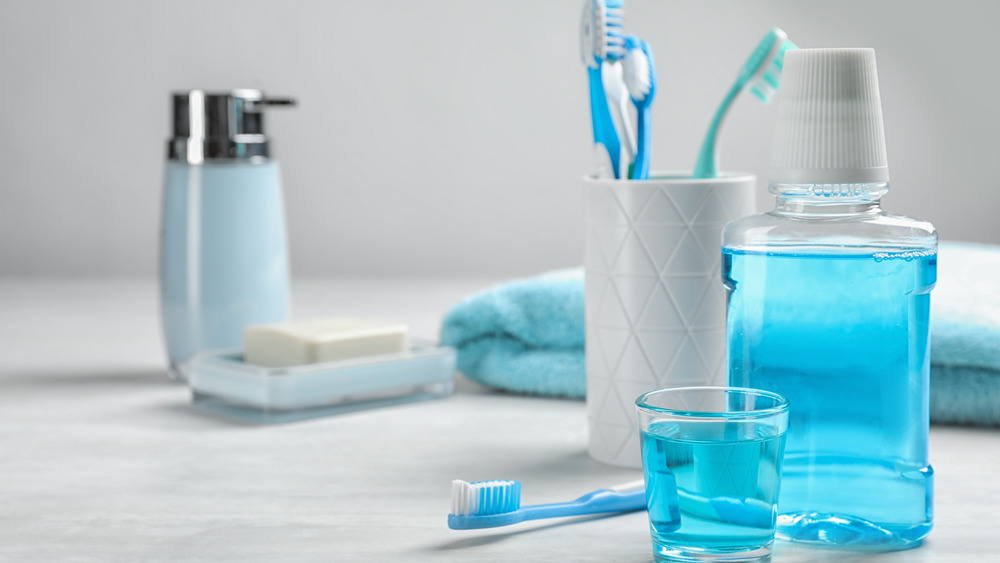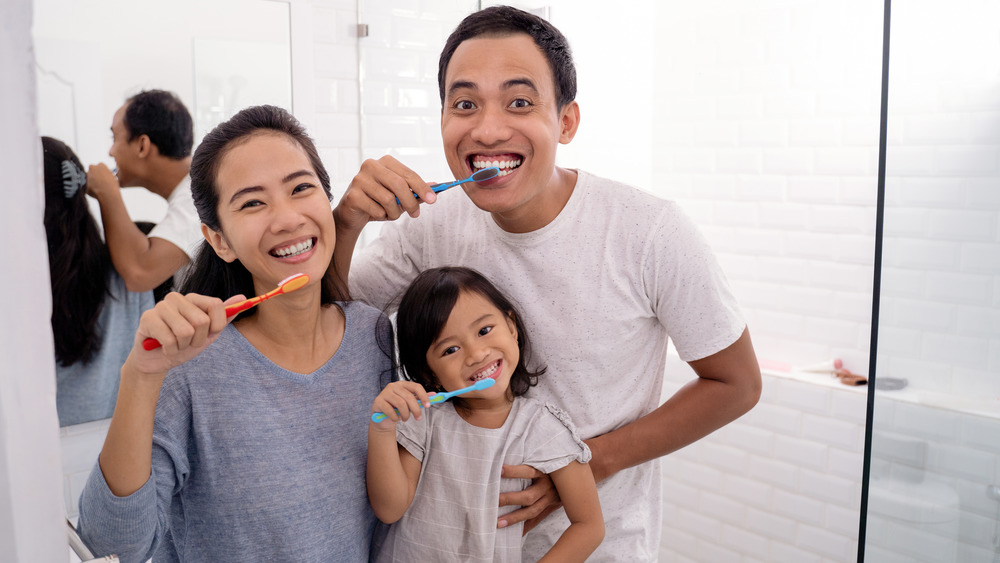What Happens When You Only Brush Your Teeth Once A Day?
The American Dental Association (ADA) has long recommended brushing your teeth twice a day with a soft-bristled brush, and yet one-third of Americans report only brushing their teeth once a day (via ADA, Delta Dental). Poor oral hygiene, particularly periodontal disease, can be detrimental to your overall health and has been linked to several chronic conditions such as diabetes, heart disease, and even stroke (via HealthyPeople2020).
According to World Health Organization, oral diseases ranging anywhere from dental caries to oral cancers affect nearly 3.5 billion people worldwide. Untreated tooth decay in permanent teeth is the most common health condition in the world, but the good news is that most oral health conditions can be prevented and treated in the early stages.
Brushing your teeth only once a day can help perpetuate bad breath or halitosis. While a number of factors can contribute to halitosis, poor oral hygiene is one of the most common. If you don't clean your teeth, gums, and tongue as directed each day, bacteria and bits of rotting food tend to grow and fester, leading to a bad taste in your mouth as well as to bad breath (via WebMD).
In addition to bad breath, only brushing your teeth once a day will surely lead to the development of dental cavities. Cavities, or caries, occur when bacteria, food, and acids coat the teeth, forming a plaque (via Healthline). The acid on your teeth starts to decay the enamel and the underlying areas. This leads to permanent tooth decay that can lead to the development of holes in the teeth and the need for procedures like root canals.
How to brush your teeth effectively
Gingivitis, more commonly referred to as gum disease, refers to inflammation of the gums. This typically happens due to a build-up of plaque on the teeth. Gingivitis may cause the gums to swell and even bleed when brushing or flossing. Untreated gingivitis can lead to more serious conditions such as periodontitis, which can spread and affect the bones of the jaw.
Untreated dental conditions can lead to the loss of teeth later on in life and therefore an impaired ability to talk or eat properly. To avoid this, the ADA recommends brushing your teeth as follows:
First, place your toothbrush at a 45-degree angle to the gums and then gently move the brush back and forth in short (tooth-wide) strokes. Brush the outer surfaces, the inner surfaces, and the chewing surfaces of the teeth. In order to clean the inside surfaces of the front teeth, tilt the brush vertically and make several up-and-down strokes. Since toothbrush bristles cannot always reach in between teeth, flossing daily is recommended to remove food and plaques from between the teeth and from under the gum line.
The entire brushing process should take at least two minutes and should be done twice a day to maintain proper oral hygiene and avoid detrimental health consequences. So if you're willing to invest in a 12-step skincare routine, you can handle a brush, floss, mouthwash oral hygiene routine!


